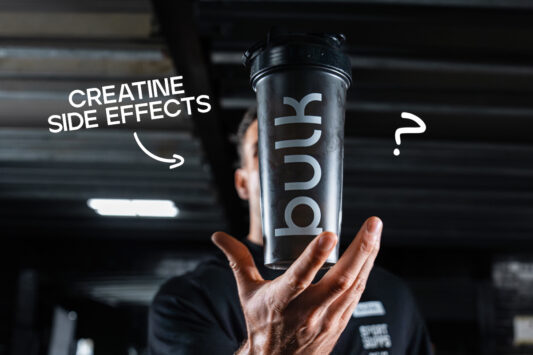The key to maintaining your training and achieving your goals depends hugely on how much time and intensity you can commit to your workout regimes. Factors such as your job, family commitments, and fatigue can limit your ability to succeed in this area. As difficult as such things can be to overcome, you may still be able to squeeze a training session in after work or go for a morning run before your family duties commence. However, one thing will hamper your training more than any other: injury.
If an injury is sustained then training becomes difficult. Sometimes, it can become dangerous.
The effects of injury are multifactorial. You will lose physical capabilities; strength, power, endurance, speed. You may negatively alter body shape by adding mass where it isn’t desirable or losing mass from key areas. You may sustain a mental dip and lose motivation for other mundane activities which your training plan would help you to psychologically withstand. There is nothing more disheartening than watching valuable days, weeks and training opportunities slip by while you remain, to coin a phrase, hamstrung by an injury.
This is why injury prevention is tantamount to success and so important to allow you to train to your optimum.
So how can we best remain free from these dreaded debilitating injuries?
Well, answering that question is not a straightforward solution.
An effective injury prevention plan is as individual as your own fingerprint. What works for some may not for work for others. So to list all methods of injury prevention is a PhD study in itself. However there are a handful of definite, proven actions which are known to be effective and will allow you to keep training to your maximum.
Load and Intensity
A sudden increase in your load and/or intensity of training is a huge risk factor for sustaining an injury.
Typically, novice athletes try to do too much, too soon and injure themselves before any gains have been achieved. For example: For a beginner to go from not running one weekend to running a 10km the next is a vast sudden increase in both the load and intensity of their running.
Likewise, experienced athletes who try to push past their current PB and go above and beyond their normal capacity also put themselves at high risk of injury. For example: An experienced athlete who normally deadlifts 120kg at 10RM should not try, on a whim, to lift 180kg for no good reason (and because your training buddy is lifting 180kg is not a good enough reason!).
The risk of injury can be significantly reduced by avoiding excessive increases in load and/or intensity of your normal training routines. A sensible rule of thumb for increasing load or reps is to use the “2 for 2” principle. If you can complete 2 extra reps at the end of each set of your normal routine then it may be time to increase the load.
Next question……how much should you increase the load by? Again, not a straightforward answer but somewhere between 2% and 10% is sensible. More than this amount can risk excessive overload and injury. For endurance athletes, a 2%-10% increase in distance of their sport at any interval is also a safe amount to avoid injury.
Understanding this process of progressive loading is vital for success.
If pain is experienced following an increase of any kind in load or intensity, before panicking, simply reduce the load (this may involve complete rest or a reduction in load back towards the previous training session) and a chartered physiotherapist or any good strength and conditioning coach will be able to advise you on this.
Previous Injury
Unfortunately, your risk of sustaining an injury is grossly increased (up to 33%) if you’ve sustained the same injury previously. Likewise, new injuries are more likely to occur too due to new biomechanical and/or physiological imbalances.
A gradual, structured return from injury to normal training is essential to minimise the risks of emphasising these imbalances and subsequently reduce re-injury risk. This is, again, all linked to load and intensity as previously discussed. A good strength and conditioning coach or physiotherapist should be able to advise you on this.
Don’t ignore the little niggles. They can lead to bigger and more detrimental pains. Act on the niggles appropriately with treatment and training modification.
Rest and Recovery
Surely the most neglected aspect of getting fit and achieving goals is the rest and recovery process. Every bit as important as the exercise itself, improper rest periods and ineffective recovery strategies can lead to major injury issues.
During exercise, muscle becomes damaged in order to grow and strengthen. Typically, skeletal muscle needs around 48 hours to fully recover after high loading. However, this doesn’t mean that you need to do nothing the day after a workout! On the contrary, light exercise is helpful to reduce muscle soreness and encourage appropriate muscle recovery.
You must be strategic in the way you exercise. A heavy chest and shoulder session on a Monday should not ideally be followed by the same session on a Tuesday. However, a biceps and back session on Tuesday would utilise the chest and shoulders in a synergistic (stabilising) manner therefore providing the light recovery activity needed for optimal gains.
Likewise, a sprint speed session for a runner would ideally be proceeded the next day by an endurance or recovery run and not another sprint speed session.
This may all sound a little obvious but it is surprising how many injuries are sustained through such poor recovery strategies. In professional sports, a plan called a periodisation plan is used to train particular aspects at particular times during the week, month or year to enhance athletic performance and encourage optimal recovery. This is something that the recreational athlete may want to consider to get the best out of their training and to allow for their own recovery.
Nutrition obviously plays a huge role in recovery. Poor nutrition can often precipitate injury and illness which prevents training so think carefully about the sustenance that you use to fuel your activities.
Other recovery strategies which will definitely help to reduce chances of injury include a structured, well adhered-to sleep pattern. It is proven that individuals who enjoy less than 6 hours sleep are at a higher risk of injury, as are individuals who vary the times which they go to bed.
Alcohol intake should ideally be limited as it is believed to inhibit protein synthesis which is an important part of muscle building (or rebuilding). Therefore alcohol consumption could lead to an increased susceptibility of certain injuries.
There is some evidence to suggest that ice and compression of limbs following exercise can enhance recovery and therefore reduce injury risk. There is still some debate as to whether this is due to an actual physiological mechanism or whether it is in fact due to a perceived psychological improvement. Either way, it isn’t really important, so long as you feel better and feel ready to keep achieving.
Other modalities that some people find useful are acupuncture, massage, stretching, yoga, pilates. All have their value for some individuals and not for others.
For a tailored injury prevention programme it is best to seek the advice of a chartered sports physiotherapist or a qualified strength and conditioning professional.
About the author:
Huw Roberts is a physiotherapist at Swansea City Football Club and a qualified strength & conditioning coach. He has over 8 years experience working with musculoskeletal disorders.
















